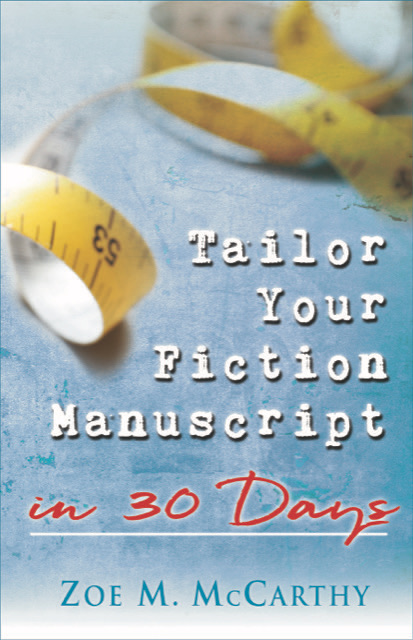

Tailor Your Fiction Manuscript in 30 Days is now available. See details below.
A misplaced modifier is a word, phrase, or clause placed awkwardly in a sentence. The modifier is improperly separated from the word it modifies and appears to modify or refer to an unintended word.
Examples will make this problem clear. Misplaced modifiers are easy to fix.

1. Confusing: Callie told Missy she needed to bring tomorrow’s picnic lunch today.
If the author meant Callie told Missy today, the reader will wonder why Missy didn’t bring the lunch today.
Clear: Today Callie told Missy she needed to bring tomorrow’s picnic lunch.
2. Confusing: Karl processed a complaint about loud music from Jessie.
Is the loud music or the complaint from Jessie?
Clear: Karl processed a complaint from Jessie about loud music.
3. Confusing: The curved bird’s beak was orange.
Is the author talking about a curved bird?
Clear: The bird’s curved beak was orange.
4. Confusing: Junior climbed the escalator stairs that rose to the second floor quickly.
Is Junior climbing quickly or is the escalator rising quickly?
Clear: Junior quickly climbed the escalator stairs that rose to the second floor.

5. Confusing: The truck towed the mangled teen’s car.
Is the teen mangled?
Clear: The truck towed the teen’s mangled car.
6. Confusing: Have You Confused Your Reader with a Misplaced Modifier?
This post title could imply the reader has a misplaced modifier.
Clear: Have You Confused Your Reader by Using a Misplaced Modifier?
7. Confusing: Jack took a pool filter to his boss filled with slimy algae.
Ew. Was Jack’s boss filled with slimy algae?
Clear: Jack took a pool filter filled with slimy algae to his boss.
As we write, we can easily fail to notice these misplaced words, phrases, and modifiers. We know what we meant. To catch misplaced modifiers, first let the document sit awhile. Then either read the document aloud or have your computer read it to you. The the order of phrases and words should sound awkward to you.
Can you share a humorous example of a misplaced modifier?
The Kindle copy of Tailor Your Fiction Manuscript in 30 Days is available for pre-order. AND if you bought or buy the print copy you can purchase the Kindle copy for $2.99. See Matchbook Price. Pre-Order Kindle

Zoe McCarthy’s book, Tailor Your Fiction Manuscript in 30 Days, is a fresh and innovative refocusing of your novel or novella. Through a few simple—and fun—steps, Zoe helps writers take their not-ready-for-publication and/or rejected manuscripts to a spit-polish finish. Writing is hard work, yes, but it doesn’t have to be difficult. —Eva Marie Everson, best-selling and multiple award-winning author, conference director, president of Word Weavers International, Inc.
If you want to increase your chance of hearing yes instead of sorry or not a fit for our list at this time, this book is for you. If you want to develop stronger story plots with characters that are hard to put down, this book is for you. Through McCarthy’s checklists and helpful exercises and corresponding examples, you will learn how to raise the tension, hone your voice, and polish your manuscript. I need this book for my clients and the many conferees I meet at writer’s conferences around the country. Thank you, Zoe. A huge, #thumbsup, for Tailor Your Fiction Manuscript in 30 Days. —Diana L. Flegal, literary agent, and freelance editor
Tailor Your Fiction Manuscript is a self-editing encyclopedia! Each chapter sets up the targeted technique, examples show what to look for in your manuscript, then proven actions are provided to take your writing to the next level. Whether you are a seasoned writer or a newbie, you need this book! —Sally Shupe, freelance editor, aspiring author









 RSS - Posts
RSS - Posts